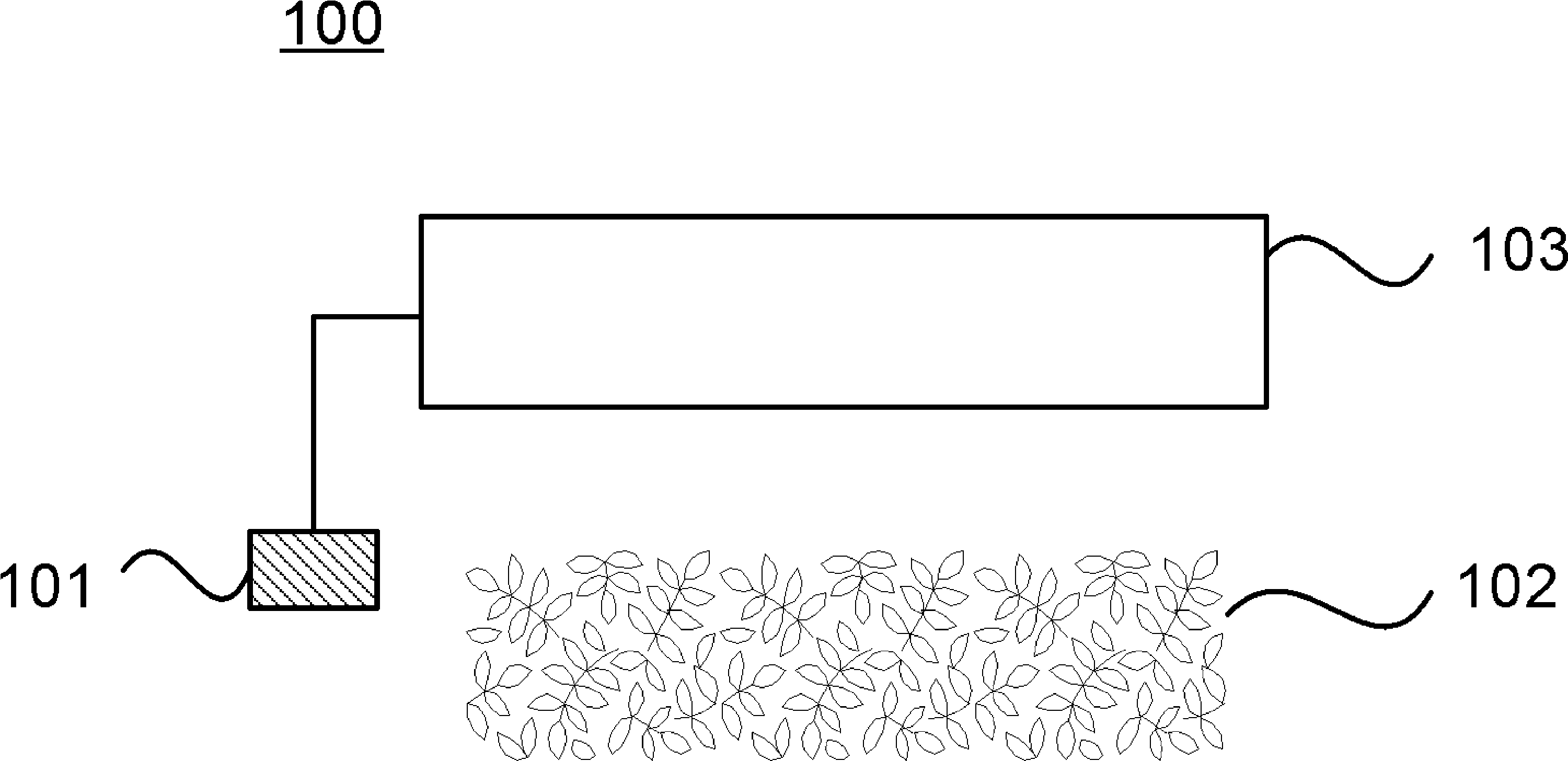Device and method for improving disease resistance of plants
A disease-resistant, plant-based technology, applied in the field of harmful devices, can solve problems such as no effect, and achieve the effects of reducing damage, enhancing resistance, and increasing biomass and yield
- Summary
- Abstract
- Description
- Claims
- Application Information
AI Technical Summary
Problems solved by technology
Method used
Image
Examples
Embodiment Construction
[0025] Reference will be made to the disclosed embodiments of the invention, one or more examples of which are illustrated in the drawings. The examples are provided by way of explanation of the invention, not limitation of the invention. For example, features illustrated or described as part of one embodiment, on another embodiment, can also be used with other embodiments. The present invention is intended to cover other modifications and variations within the scope and spirit of the present disclosure.
[0026] In the present invention, "plant" includes general photosynthetic plants, especially agricultural crops (for example, including but not limited to food crops, horticultural crops, fruits, vegetables, etc.). More specifically, the plants in the present invention can also be greenhouse plants, such as cucumbers, tomatoes and other vegetables, fruits and other crops suitable for growing in greenhouses.
[0027] Photosynthetically active radiation (PAR) refers to light ...
PUM
 Login to View More
Login to View More Abstract
Description
Claims
Application Information
 Login to View More
Login to View More - R&D
- Intellectual Property
- Life Sciences
- Materials
- Tech Scout
- Unparalleled Data Quality
- Higher Quality Content
- 60% Fewer Hallucinations
Browse by: Latest US Patents, China's latest patents, Technical Efficacy Thesaurus, Application Domain, Technology Topic, Popular Technical Reports.
© 2025 PatSnap. All rights reserved.Legal|Privacy policy|Modern Slavery Act Transparency Statement|Sitemap|About US| Contact US: help@patsnap.com

